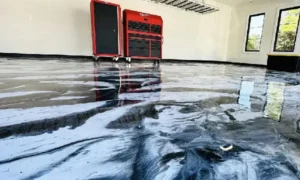In the realm of property management, the property management back office plays a pivotal role in ensuring seamless operations, efficient communication, and effective resource management. From handling administrative tasks to managing finances and facilitating tenant interactions, the back office serves as the backbone of property management companies. In recent years, advancements in technology and evolving business practices have brought about significant transformations in the way back office operations are conducted. To stay competitive and meet the growing demands of the industry, property management firms must embrace modern solutions and best practices tailored to streamline their back office functions.
Understanding Property Management Back Office
The Property Management Back Office firm encompasses a wide range of administrative and operational tasks that are essential for the smooth functioning of the business. These tasks typically include:

- Accounting and Financial Management: Managing budgets, processing payments, handling payroll, and generating financial reports.
- Tenant and Lease Management: Handling tenant inquiries, lease agreements, renewals, and terminations.
- Maintenance and Repairs: Coordinating maintenance requests, scheduling repairs, and ensuring timely resolution of issues.
- Compliance and Legal Affairs: Ensuring adherence to regulatory requirements, handling legal documentation, and mitigating risks.
- Data Management and Analysis: Collecting and analyzing data related to property performance, occupancy rates, and market trends.
Related: Real Estate Virtual Assistant
Challenges in Back Office Operations
Despite its significance, the property management back office often faces various challenges that can hinder operational efficiency and productivity. Some common challenges include:
- Manual Processes: Reliance on manual tasks such as data entry, paper-based documentation, and spreadsheet management can lead to errors, inefficiencies, and delays.
- Lack of Integration: Disparate systems and software solutions that do not integrate seamlessly can result in data silos, duplication of efforts, and communication barriers.
- Compliance Risks: Keeping up with evolving regulatory requirements and ensuring compliance with industry standards can be complex and time-consuming.
- Limited Scalability: Traditional back office systems may struggle to accommodate growth and expansion, leading to scalability issues as the business expands.
Related: 24/7 live chat support
Strategies for Streamlining Back Office Operations
To address these challenges and optimize Property Management Back Office operations, property management companies can adopt the following strategies:

- Invest in Technology: Embrace modern property management software solutions that offer comprehensive features for accounting, tenant management, maintenance tracking, and reporting. Cloud-based platforms provide flexibility, scalability, and accessibility from anywhere, enabling teams to collaborate effectively and streamline workflows.
- Automation of Routine Tasks: Implement workflow automation tools to streamline repetitive tasks such as invoice processing, rent collection, and maintenance requests. Automation not only reduces manual effort but also minimizes errors and accelerates process cycles.
- Centralized Data Management: Consolidate data from various sources into a centralized repository to facilitate easy access, analysis, and reporting. Integrated systems eliminate data silos and ensure consistency across operations.
- Enhanced Communication Channels: Utilize communication tools such as portals, mobile apps, and email automation to enhance interaction with tenants, vendors, and internal stakeholders. Property Management Back Office Clear and transparent communication fosters tenant satisfaction and improves overall service delivery.
- Compliance Management Solutions: Implement software solutions specifically designed for compliance management to stay updated on regulatory changes, track documentation, and mitigate legal risks effectively.
- Performance Monitoring and Analytics: Leverage data analytics tools to track key performance indicators (KPIs), monitor property performance, and identify areas for improvement. Data-driven insights enable informed decision-making and strategic planning.
- Continuous Training and Development: Provide ongoing training and professional development opportunities to back office staff to ensure they are equipped with the necessary skills and knowledge to adapt to evolving technologies and best practices.
Related: Accounting Real Estate
Conclusion
Efficient Property Management Back Office are essential for the success of property management firms, enabling them to effectively manage properties, optimize resources, and deliver superior services to clients and tenants. By embracing modern technology, automation, and best practices, property management companies can streamline their back office functions, enhance productivity, and stay ahead in a competitive market landscape. With a focus on innovation and continuous improvement, organizations can unlock new levels of efficiency and effectiveness in managing their property portfolios.






























